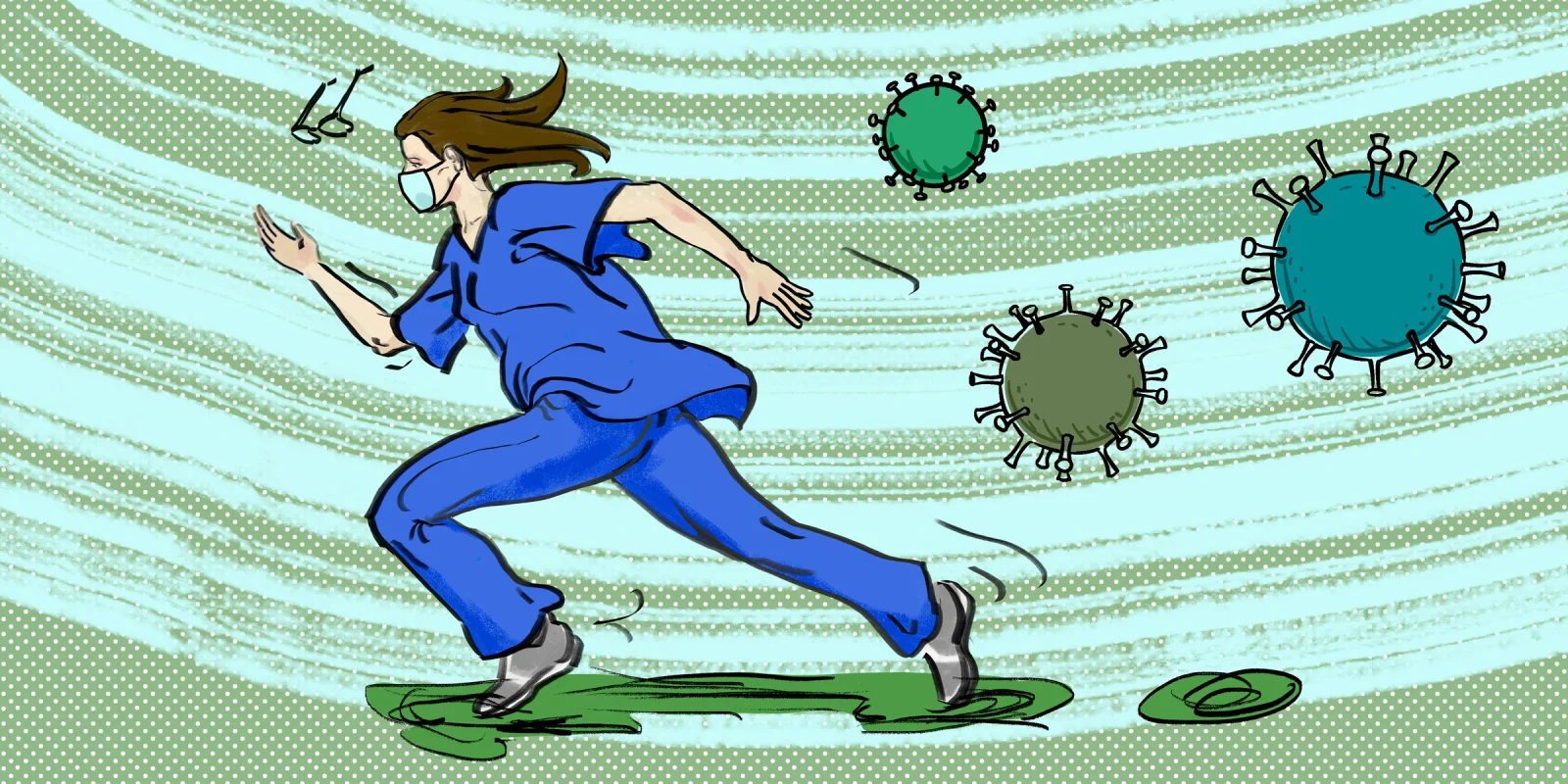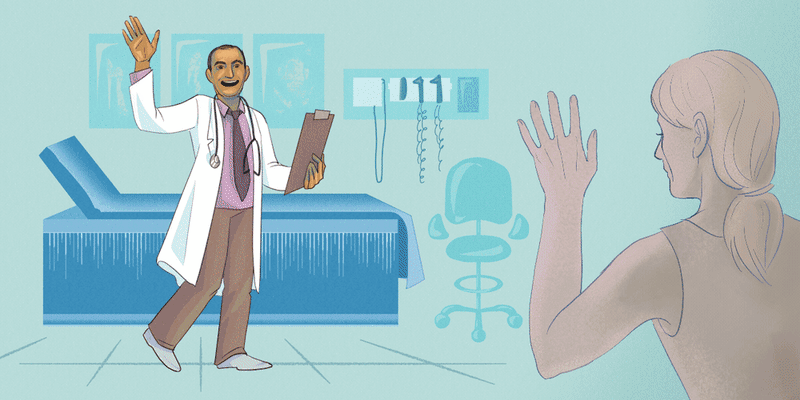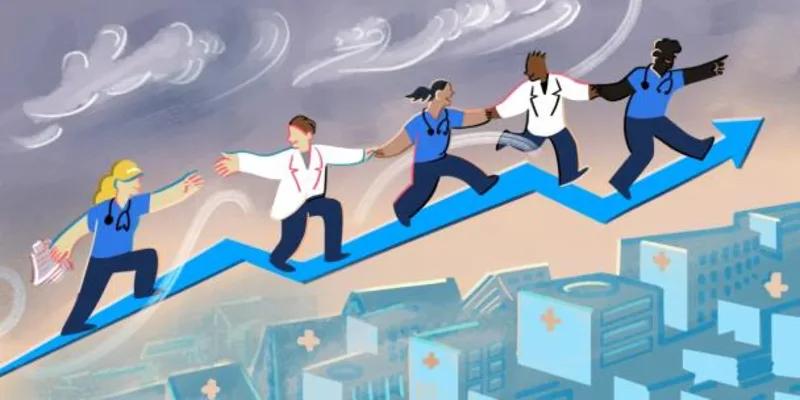Approaching the pediatric ED, anxiety grew with each step. A cacophony of coughs, sniffles, and sneezes could be heard before even entering the ER. In these moments, we were overcome with feelings of physical and emotional exhaustion; compassion stretched too thin as endless waves of sick patients filled the waiting room with no end in sight. This sentiment was in contrast to the emotions experienced at the start of our fellowship only a few months back. That bright, nervous excitement of being a new pediatric EM fellow had quickly fizzled and been replaced with a sense of uncertainty.
As freshly minted first-year pediatric EM fellows, we were still trying to familiarize ourselves with a new EMR, locating the nearest restrooms, and understanding the general workflow of a bustling ED. Then, we were hit with a viral surge soon to be known as the “triple-demic.” Influenza, RSV, and COVID-19 strained our health care system in a way we could not have predicted. Though we had come to expect the inevitable seasonal influx of pediatric patients from residency, the combination of an overcrowded waiting room, lack of support staff, and, consequently, a shortage of inpatient bed availability left us feeling unprepared for this sudden overflow of patient volumes; a sentiment echoed by other pediatric hospitals as well.
Just as we were finally returning to normalcy following the COVID-19 pandemic, our world was once again thrown into disarray. In residency, we relied on the work of other team members to chart vital signs, administer medications, and discharge patients. As residents, we were not expected to crush our own dexamethasone or start nebulizer treatments. Had our programs informed us that these tasks were expected of us, it would have been met with resistance — yet another task to augment our resilience. Our prior training left us vulnerable in this environment. Traditional teaching suffered during these months as there was no time to sit down and discuss patient differentials and plans. ICU patients were being boarded in the ED for multiple days, straining nursing-staff ratios and pushing the limits on our scope of practice. There was an overwhelming sense of frustration among staff members. Often, our working environment felt unsafe. We were being tasked with the responsibility of long-term care for children who met inpatient criteria in addition to taking care of new patients presenting to the ED. Our mental health was strained daily, not only from the lack of time we were able to spend with our patients, but also from the added pressure to adapt to constant changes in workflow demanded by hospital administrators. Countless emails were sent reminding us to continue seeing as many patients as possible in order to decrease our walk-out rates. It was all about the RVUs. Morale was at an all-time low and exacerbated by nurses quitting on an almost daily basis. We were seldom able to sit down, earnestly counsel families, and thoroughly answer questions since we were suffocated by the growing number of responsibilities. As wait times steadily increased, frustration from parents also began to rise, and we had to face the angry queries from many of them. A breaking point was hearing about a six-month-old child who ultimately passed after going to three different ERs without being seen, and once they were, it was too late. We were left thinking of how many more children faced a similar fate.
When being perpetually pushed to our limits, it was unavoidable that our personal and emotional wellness became a nonexistent priority. Though we as physicians had made a commitment to help others in need, at this juncture, it felt more like a job and less of a calling. In the whirlwind of a hectic shift, there would rarely be time to process any emotions. There were many nights where we would come home and ruminate about the events that had transpired during the day. It was difficult to fall asleep while thinking about the numerous children that left without being seen or the ones we discharged home because they were not as sick. Were they OK? Would they truly come back if things worsened? Or worse, what did we miss?
In a time where things seemed bleak, it was our patients that made us stay. As hard as our lives were during this time, the lives of our patients and their families who trusted us with their care were even worse. If they were able to wait over 12 hours to be seen and still be thankful, then the least we could do was continue to show up for them. We had an obligation to put their needs above our own. When the health care system was being pushed to its brink, we came together with a sense of resilience and collaboration. Inpatient hospital teams helped by rounding onboarded patients in the ED, previously empty hallways were reconstructed to function as new pods, chairs replaced beds, and portable vital carts and oxygen tanks were scattered throughout. An airway/asthma cart was created to allow fast and easy-to-access respiratory treatments in the hallways. Attendings, fellows, residents, and medical students all learned how to administer dexamethasone and nebulizer treatments, obtain vitals, and print discharge paperwork. We had gained experience we would not have otherwise had, more than traditional teaching could have taught us. We learned how to manage a daily chaotic environment and independently provide treatments, and seized the opportunity to step up when the situation called for all hands on deck. The surge reinforced our decision as to why we became ER physicians in the first place — to care for acutely ill and injured children, together. During the triple-demic, our systematic vulnerabilities were exposed. We urgently discovered that our division needed to be better prepared for these surges. Hopefully, with this advanced planning, we will be better equipped to handle the next pediatric surge, as it is not a question of if, but rather when.
Dr. Lea Dikranian is a first-year pediatric emergency medicine fellow at Children's Hospital of Michigan. She has a passion for simulation, medical education, and toxicology.
Dr. Joshua Kim is a first-year pediatric emergency medicine fellow at Children's Hospital of Michigan. He has a passion for ultrasound, education, and academic medicine.
Illustration by Jennifer Bogartz






